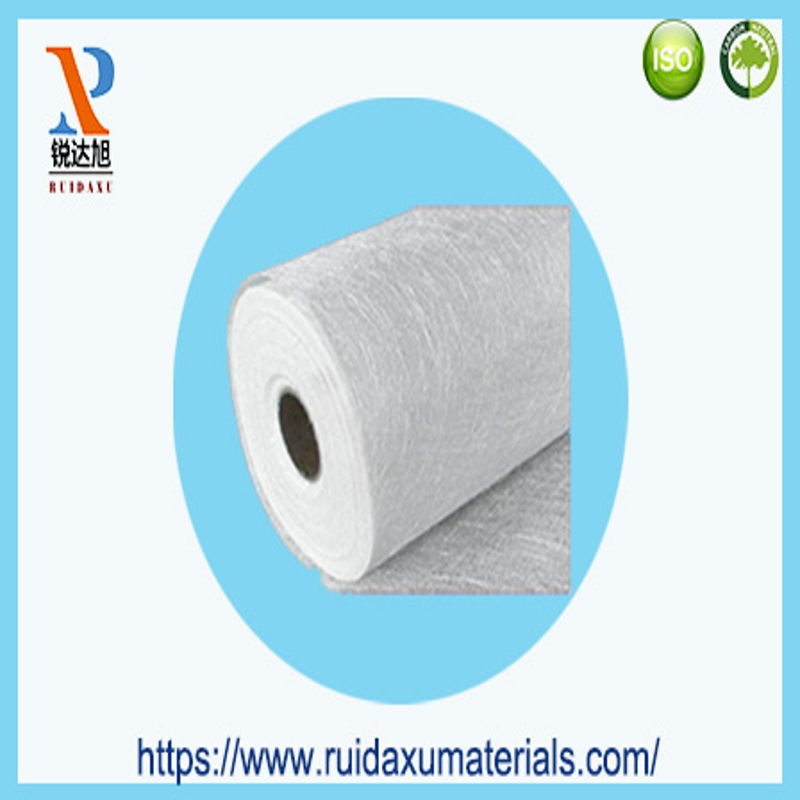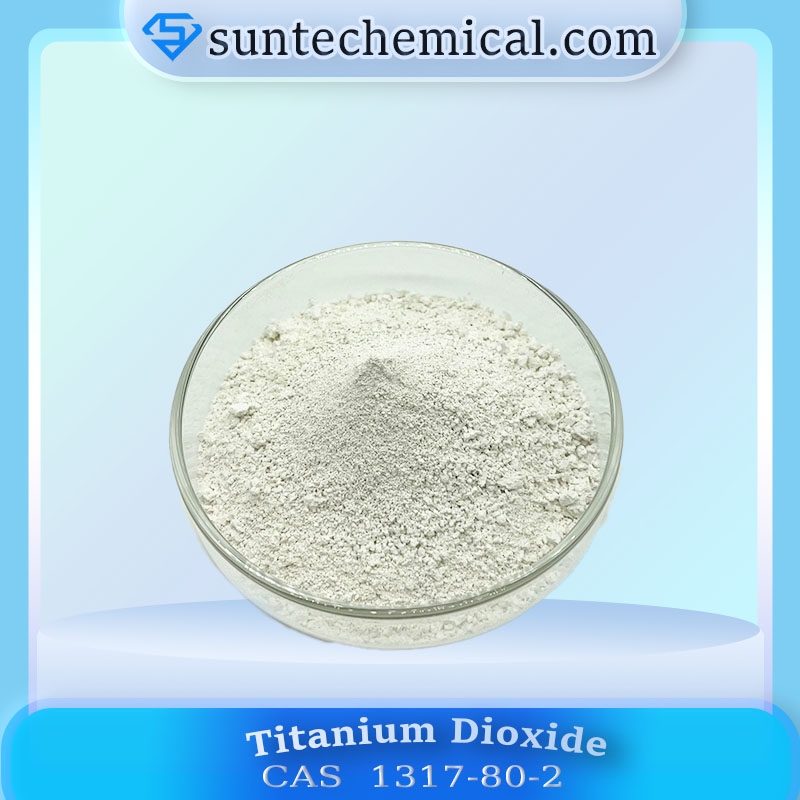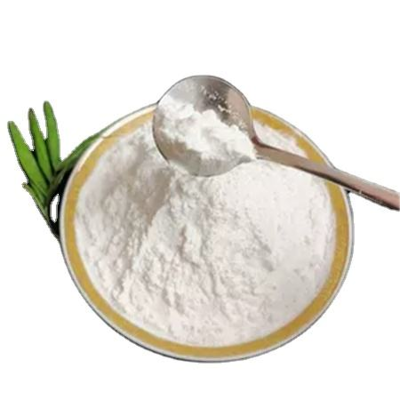-
Categories
-
Pharmaceutical Intermediates
-
Active Pharmaceutical Ingredients
-
Food Additives
- Industrial Coatings
- Agrochemicals
- Dyes and Pigments
- Surfactant
- Flavors and Fragrances
- Chemical Reagents
- Catalyst and Auxiliary
- Natural Products
- Inorganic Chemistry
-
Organic Chemistry
-
Biochemical Engineering
- Analytical Chemistry
-
Cosmetic Ingredient
- Water Treatment Chemical
-
Pharmaceutical Intermediates
Promotion
ECHEMI Mall
Wholesale
Weekly Price
Exhibition
News
-
Trade Service
2 Titanium ore
2.1 market status quo China's titanium industry originated in the 1960s, by the downstream industry (especially the titanium-white industry) slow development, until the end of the 20th century has not been well developed, the total output of titanium ore in the country is only more than 300,000 t, the largest single production line actual output of less than 100,000 t, not only did not form a large-scale manufacturer, but also the overall scale is small, in the global titanium raw materials industry has little impact. With the rapid development of titanium-white industry in China, the demand for titanium resources has increased rapidly, stimulating the rapid development of titanium-mining industry in China. At present, China's titanium mineral industry has formed a production capacity of nearly 3.5 million t, the actual domestic output of more than 3.2 million t (excluding imported domestic processing part) of the scale, accounting for about 10% of the global supply, after Australia, Canada, South Africa, the fourth largest producer of titanium raw materials, in the global titanium raw materials production countries have an important position and influence. In 2013, Yunnan titanium industry for the first time introduced Australia's high-quality titanium ore into Yunnan, with Australia's 4th largest mining company AIR, built an annual output of 300,000 t of titanium production base, officially started on March 1.The main application area of titanium ore in China is titanium dioxide industry, accounting for more than 85% of the total domestic consumption of titanium raw materials, other applications in the demand of about 15%, mainly sponge titanium and titanium ferroalloys. Titanium consumption involves titanium white, titanium, titanium chemical, titanium ferroalloys, reduced titanium and other applications, the consumption base is: 1 t titanium dioxide consumption of titanium ore 2.3 t, 1 t titanium tetrachloride consumption of titanium ore 2.3 t, 1 t sponge titanium consumption of titanium ore 5.0 t. The operation of titanium white directly determines the market demand of titanium ore. In 2013, the operating rate of the titanium-white plant was 77%, and the total demand for titanium ore in various industries did not exceed 6 million t.2.2 Imports and pricesCumulative imports of titanium ore for the whole of 2013 were 2,274,707 t, a decrease of 633,069 t, or 21.8%, compared to 2012. Figures 5 and 6 are the trend of imports and prices of titanium minerals in 2013, respectively. As can be seen from Figures 5 and 6: Due to Vietnam's 10% increase in export tariffs on some minerals in June 2013, the export tariff on titanium ore was raised from 30% to 40%, resulting in higher prices for titanium ore, and the import price of titanium ore in June was US$383/t, the highest level of the year. However, with the weakness of the domestic titanium dioxide market, imports of imports of titanium ore prices did not last long and began to decline.3 The status quo of titanium dioxide industry 3.1 product structure changes, denitrification titanium white rise In the 1950s, China's titanium dioxide products to non-pigment grade enamel, welding rods, ceramics, the 70's gradually to pigment-grade sharp titanium-type development, after the 1990s Higher-grade gold-redstone products are on the market, and the proportion is increasing, compared with the international pigment grade titanium dioxide products popular structure ratio (golden redstone products accounted for 85% to 90%, sharp titanium-type products only 10% to 15%), China's titanium white powder product structure still needs to be further improved. It is worth noting that in 2013, the proportion of pigment titanium white decreased due to a combination of factors such as overall market weakness and national policy orientation. According to the Titanium White Sub-Center of the National Chemical Industry Productivity Promotion Center, the gold-redstone type of titanium dioxide produced in 2013 was 1,420 104 t, accounting for 65.9% of the total output, down 4 percentage points from the previous year; 71 t, accounting for 23.9% of total titanium dioxide production, down 0.9 percentage points from the previous year, and 220 887 t for non-pigment grade and specialty titanium white, accounting for 10.3% of total titanium dioxide production, an increase of 5 percentage points over the previous year. Changes in the market environment determine changes in product types. Among them, national policy orientation is also a great cause. Because coal-fired power plants and various industrial boilers emit a large amount of nitrogen oxides (NOx), serious pollution of the environment, endangering human health. At present, the state has issued the corresponding mandatory denitrification policy, each power group and steel mills have also developed the corresponding denitrification transformation schedule, in the next few years will be fully built denitrification system. As a result, the denitrification market will soon enter a period of high growth. Selective catalytic reduction method (SCR) is currently the most commonly used and efficient denitrification technology, is widely used in power plants, glass mills, steel mills and other exhaust denitrification. The technology uses a large number of denitrification catalysts, so the market potential of denitrification catalysts is huge. Nano-titanium white powder is the main component of denitrification catalyst, accounting for 80% to 90% of its mass. With the rapid growth of the demand for denitrification catalysts, the market demand for nano-titanium white powder will also increase rapidly. According to the Ministry of Environmental Protection, an additional 817 million kW of denitrification capacity will be required by 2015. Since selective catalytic reduction technology (SCR) is the most efficient denitrification technology, according to the current GB 13223-2011 "atmospheric pollutant emission standards for thermal power plants", new units in key areas must be fully installed SCR denitrification devices, and about 50% of other areas must be installed SCR denitrification devices. As a result, the demand for SCR catalysts for thermal power plants during the 12th Five-Year Plan period has been increasing year by year, reaching 205,000 m3 by 2015. During the 12th Five-Year Plan period, the total SCR catalyst market demand for thermal power plants was 800,000 m3, with an average annual demand of 160,000 m3. From 2016 to 2020, the installed capacity of thermal power plants will increase, and the life of the denitrification catalyst will be about 3 years, requiring regular replacement, so the SCR catalyst required for the new installation, together with the replacement of the SCR denitrification catalyst, will total more than 1 million m3, an average of 160,000 m3 per year. Each denitrification catalyst requires nano-titanium white powder amount of about 0.5 t, then the "12th Five-Year Plan" period of the average annual demand for nano-titanium white powder is 80,000t, the future "13th Five-Year Plan" period of the average annual demand for nano-titanium white powder will reach 100,000t.although the performance and stability of denitrification titanium white in some applications still exist with similar products abroad, but SCR denitrification catalyst with titanium dioxide localization has become a reality. Coupled with the low market price of generic titanium dioxide, many manufacturers are looking to this market. According to the National Productivity Promotion Center Titanium White Sub-Center statistics, in 2013 the domestic denitrification titanium white production capacity reached 95,000 t, more than the market needs, overcapacity issues deserve attention.3.2 Further optimization of industrial structure Under the new situation of increasingly serious resource and environmental constraints, increasingly fierce international industrial competition and the obvious rise of trade protectionism, it is necessary to promote mergers and reorganization of enterprises, promote the optimization and upgrading of industrial structure, accelerate the transformation of development mode, improve the quality and efficiency of development, enhance the ability to resist international market risks and achieve sustainable development.it is understood that the international production of titanium dioxide is mostly monopolized by large companies, DuPont (1.16 million t/a), Huntsman, 565,000 t/a, of which chlorination is 2 31,000 t/a, or 40.2%, plus the new acquisition of Lockwood's German Shahariben (including Kemira, Finland) of 340,000 t/a, totalling 905,000 t/a, crystal global , 778,000 t/a), Tronox, Australia (Tronox, 462,000 t/a, all chlorinated), Kronos, Germany (Kronos, 442,000 t/a, chlorinated 67%), Ishihara Corporation of Japan (ISK, 250,000 t/a) each has a total capacity of 3.997 million t/a, accounting for 88.8% of the total global production capacity of 4.5 million t/a excluding China.in recent years, enterprises in various industries and fields have been actively integrated through mergers and acquisitions of equity, assets and other forms, the pace of mergers and reorganizations has accelerated, the industrial organizational structure has been continuously optimized, and the titanium-white industry has achieved remarkable results. In 2013, the pace of merger and reorganization slowed down, but the expansion of production capacity of large enterprises and the closure of small titanium-white enterprises led to a higher concentration of production capacity in the industry and further optimization of industrial structure. In 2013, the top 10 companies produced 1.1 million t, accounting for 51.2% of the total annual production, while the top 20 companies produced 1.59 million t, accounting for 73.9% of the total annual production. However, we should also clearly realize that compared with international counterparts, China's titanium white industry concentration is still low.3.3 Technology Development Because China's titanium dioxide industry is based on sulfuric acid process, the rapid expansion of titanium dioxide enterprises in the past ten years is also basically based on 3 sets of introduced sulfuric acid devices, titanium chloride is actually only a starting point. By 2010, the production capacity and output of titanium chloride was only 1.5% of the country's total titanium dioxide. At present, all over the expansion of production projects are still mainly titanium sulfate method. Titanium chloride is used less because of foreign monopoly and self-development is too difficult, and there are many technical difficulties to overcome, including production technology, high-quality titanium slag raw materials supporting, chlorinated slag and exhaust gas treatment. The industrial products of titanium chloride are only redstone type, and some of the necessary sharp titanium products in some fields can only be produced by sulfuric acid method. In China, sulfuric acid process has more than 50 years of history, mature and stable process, abundant sources of raw materials, with a sharp titanium type and redstone-type products comprehensive advantages, so it is the current and future quite a period of time in China's titanium white industry mainstream process. Of course, titanium dioxide with sulphuric acid still has a lot of room for improvement in the production process, equipment and waste side treatment. Throughout history, it is not difficult to find that when the titanium industry market is depressed, it is often a period of rapid development of technological improvement and innovation. Since its establishment in 2011, the Titanium White Powder Industry Technology Strategic Alliance has been committed to improving the production and manufacturing technology, waste side treatment and comprehensive utilization of the titanium dioxide industry, clean production level, etc., and has achieved effective results in promoting industrial upgrading.3.3.1 Process Improvement Continuous acid solution is the most advanced acid solution technology in titanium dioxide industry by sulfate method, compared with intermittent acid solution, continuous acid solution has the following advantages: less acid solution exhaust gas produced, low sulfur content, easy to treat; Especially in the field of sulfur-containing exhaust emissions, continuous acid solution has obvious advantages. Titanium slag instead of titanium iron ore as a raw material for titanium dioxide production, its advantages are to reduce sulfuric acid consumption, greatly reduce or even fundamentally eliminate the production of iron sulfate, can improve unit equipment capacity, reduce equipment fixed investment. It is precisely because of its many advantages, titanium slag as a raw material for titanium white production, has long been highly valued by the titanium white industry at home and abroad, and has been rapid development. However, the development of titanium slag as raw material is limited due to the cost advantage of titanium essential ore. On the basis of laboratory research, Pansteel Titanium Industry Joint Research Institute has jointly developed the continuous acidation process technology of titanium slag, which provides a new and effective way for the treatment of "three wastes" of titanium dioxide by sulfate method. At present, the technical difficulties of the project have been basically solved, Pansteel titanium industry said it plans to use the technology in the new plant.
3.3.2 device upgradeBy Nantong Sansan Graphite Equipment Technology Co., Ltd. and Panzhihua Haifeng Xin Chemical Co., Ltd. jointly developed the "easy-to-hydrolysate titanium liquid multi-effect low-temperature concentration technology and equipment" project, for titanium liquid in the process of concentrating easy to hydrolysate, high energy consumption problems, successfully developed multi-effect low-temperature enrichment technology and equipment. Through the experiment, the project draws the law of early hydrolytic in the process of titanium concentration, reasonably determines the concentration, acidity, temperature and vacuum of titanium liquid at all levels, forms a multi-effect enrichment process software package, develops the temperature segment control technology of titanium concentration, and effectively inhibits the early hydrolytic process of titanium concentration. In the event of occurrence, the stability of the resulting thick titanium liquid is better than the conventional single-effect concentration, the surface treatment technology of graphite tube and graphite components has been developed, and the hole wall is smoother than that of titanium pipe, it is not easy to scale and blockage, and the graphite heat exchanger heat exchanger is stable and has good effect. Since April 2012 in Panzhihua City Haifeng Xin Chemical Co., Ltd. 60,000 t/a gold-redstone titanium production line has been built and operated for 2 years, during which the operation has been continuously stable, has not stopped maintenance and removal of fouling. The operation results show that compared with the single-effect enrichment device, the steam consumption is 40% to 50%, the annual steam saving is about 54,000 t, and the energy saving effect is remarkable.3.3.3 waste side treatment due to environmental pressure, the production enterprises in waste side treatment have invested a lot of manpower, a time can be described as "eight cents across the sea, each show the gods." Such as Wuhan square acid exhaust treatment device technology through the promotion of the alliance, signed 15 enterprises on the spot, has entered the project implementation and completed a total of 6; The problem has stagnated, but still actively seeking solutions, Guangdong Huiyun titanium industry in the titanium dioxide cycle economy industry demonstration and promotion project, the most important sludge pressing technology made a huge breakthrough, can make the sludge moisture content of 13% to 15%, in 2013 during the annual meeting of the titanium dioxide industry by all parties concerned.4 Conclusion In 2013, the titanium dioxide market showed a downward trend, the overall operating efficiency of titanium dioxide industry enterprises decreased from the previous year, titanium white products in China's long-term oversupply situation, enterprises competed fiercely with each other, the profit is meager. And China's titanium white industry market price mechanism is being formed, small micro-titanium white enterprise order rectification, integration is under way, titanium white industry's overall competitiveness will be further enhanced.the international situation, although the European economy in the short term there are signs of recovery, but the current situation of weak market demand remains the biggest stumbling block to the recovery of the European economy. The U.S. economy is growing, but slow growth is hard to pull the global economy on its own. The international environment as a whole tends to recover, but it is difficult to grow rapidly in the short term.domestic situation, the national economy stabilized slowly in 2013 and continued to maintain moderate and rapid growth. China's "12th Five-Year Plan" GDP economic growth target of 7%, and titanium dioxide applications are based on basic industries, such as: construction, real estate, automobiles, chemical fiber textiles, daily necessities, etc. , will follow







